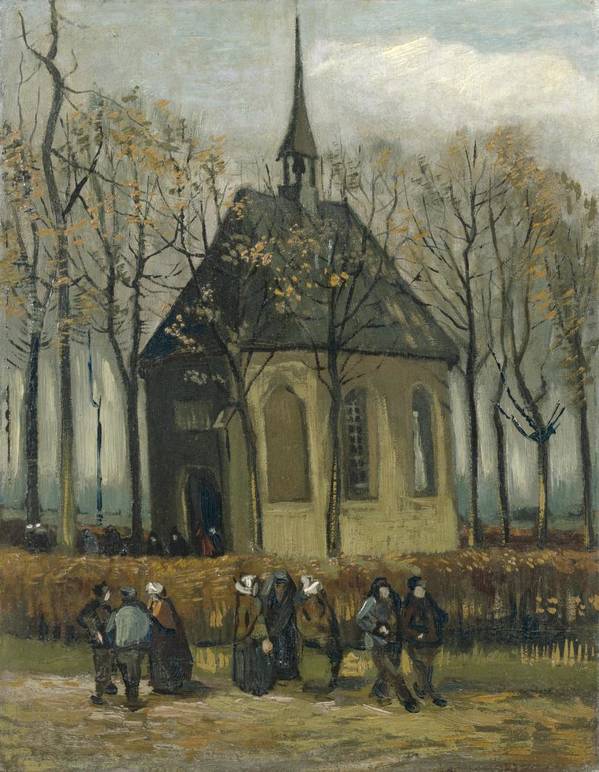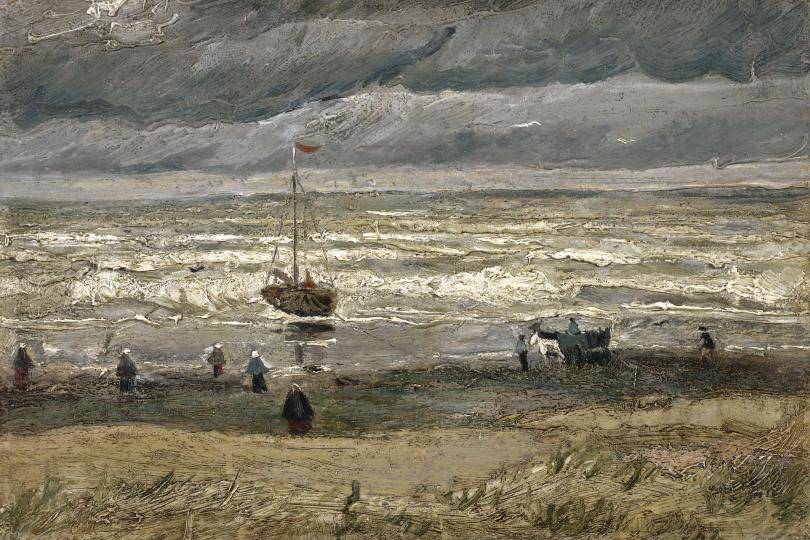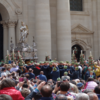Stolen Van Gogh Paintings Recovered by Anti-Mafia Police
During an investigation into a group linked to the Camorra, Naples’ notorious mafia family, police discovered two Vincent van Gogh (1853-1890) paintings that were taken in a heist from the Van Gogh Museum in Amsterdam in 2002. An art curator inspected the two canvases at the request of Italian authorities and concluded that they are real.
The works, "Seascape at Scheveningen” and "Congregation Leaving the Reformed Church in Nuene," were found wrapped in cloth in the basement of an apartment belonging to Raffaele Imperiale, a rich and powerful drug dealer. While the paint has flaked away in the bottom left corner of the Scheveningen scene, and the latter suffered minor damage and lacks its frame, both appear to be in relatively good condition.
A specialized team within the Italian Public Prosecutions Department was investigating the Amato Pagano clan, an international drug smuggling group affiliated with the Camorra, when they made this discovery in the village of Castellammare di Stabia near Naples. It remains unknown how the clan got a hold of the paintings, or whether its members had intentions of selling the works on the international black market. Apartments, villas, and a plane worth an estimated total of 20 million euros have also been seized as part of this crackdown targeting cocaine trafficking.
Octave Durham, a Dutch art thief nicknamed "The Monkey," and an accomplice used a ladder to reach the attraction’s roof and smashed a reinforced glass window in order to break in during the early morning of December 7, 2002. The thieves were able to snag the paintings and escape down a rope before security could reach them. They were jailed two years later in 2004, despite maintaining their innocence.
Axel Rüger, director of the Van Gogh Museum, expresses his enormous relief for this recent recovery.
"The paintings have been found! That I would be able to ever pronounce these words is something I had no longer dared to hope for," he said in a statement.
Both pieces date back to the 1880s, relatively early in the artist’s career, and are of huge historical value. The seascape, painted in 1882, is only one of two from his years spent in The Hague, and serves as an important example of his early style of painting. The small canvas of Nuenen church, where the artist's father was a Dutch Reformed Church pastor, is the only painting in the museum’s collection still in its “original stretcher frame.” Van Gogh painted it in 1884 for his mother and reworked it after his father's death in 1885, adding churchgoers and women wearing shawls used for mourning.
"The strong biographical undertones make this a work of great emotional value," the museum said.
Italy's specialist financial police are currently holding the artworks as evidence for a criminal trial. The museum, which houses the world's largest body of Van Gogh works, hopes for an eventual return to fill an important gap in its 800-work collection.







































i-Italy
Facebook
Google+
This work may not be reproduced, in whole or in part, without prior written permission.
Questo lavoro non può essere riprodotto, in tutto o in parte, senza permesso scritto.